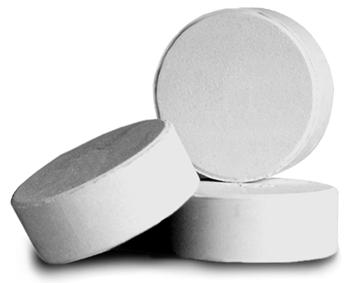What is Gout?
The word gout comes from Latin gutta and old French gote meaning "a drop". Several hundred years ago gout was thought to be caused by drops of viscous humors that seeped from blood into the joints. In fact, this supposition was not that far from the truth. When a patient experiences the symptoms of a gout attack uric acid has been accumulating in his blood, and uric acid deposits have been forming in the joints.
Gout is a complex disorder, it is more prevalent among men, and afflicts women more commonly after the menopause. Men have higher uric acid levels in their blood than women.
According to Medilexicon's medical dictionary, Gout is:
"A disorder of purine metabolism, occurring especially in men, characterized by a raised but variable blood uric acid level and severe recurrent acute arthritis of sudden onset resulting from deposition of crystals of sodium urate in connective tissues and articular cartilage; most cases are inherited, resulting from a variety of abnormalities of purine metabolism.
The familial aggregation is for the most part galtonian with a threshold of expression determined by the solubility of uric acid. However, gout is also a feature of the Lesch-Nyhan syndrome, an X-linked disorder [MIM*308000]."
What are the symptoms of gout?
Signs and symptoms of gout are generally acute - they come on suddenly without warning. A significant proportion of patients experience them at night.
- Severe pain in the joints - The patient may experience pain in his ankles, hands, wrists, knees or feet. More commonly the big toe is affected (podagra). Many patients describe the affected areas as warm/hot. The fluid sacs that cushion tissue (bursae) may become inflamed (bursitis) - when this happens in the elbow it is called olcranon bursitis, while in the knee prepatellar bursitis.
- Gradually goes away - A bout can last for over a week if left untreated - and then gradually goes away during the following week or two.
- Itchy and peeling skin later - As the gout subsides the skin around the affected area may be itchy and peel. By the end of it the patient feels fine.
- Redness and inflammation - The sufferer will most likely have tender, red and swollen joint(s) in the areas that experienced the most pain.
- Red/purplish skin - The affected area may become red or purplish, making the patient think he has an infection.
- Fever - Some patients have an elevated temperature.
- Less flexibility - The affected joint may be harder to use, the patient has limited movement.
- No symptoms - Some patients experience no symptoms. In these cases it may develop into chronic gout.
- Nodules - The gout may first appear as tophi (nodules) in the elbows, hands, or ears.

Gout presenting in the metatarsal-phalangeal joint of the big toe
What causes gout?
The levels of uric acid in your blood rise until the level becomes excessive (hyperuricemia), causing urate crystals to build up around the joints. This causes inflammation and severe pain when a gout attack happens.
When the human body breaks down chemicals called purines it produces uric acid. Purines can be found naturally in your body, as well as in food, such as organ meats, anchovies, asparagus, mushrooms and herring.
Most of the time uric acid dissolves and goes into the urine via the kidneys. However, if the body is producing too much uric acid, or if the kidneys are not excreting enough uric acid, it builds up. The accumulation results in sharp urate crystals which look like needles. They accumulate in the joints or surrounding tissue and cause pain, inflammation and swelling.
Surprisingly, hyperuricemia is commonly found in many people who never develop gout. Scientists are not completely sure what causes hyperuricemia. There is definitely a genetic factor because a person who has close relatives with hyperuricemia is more likely to develop it himself.
The following have been known to bring about a gout attack and may be contributory causes of gout:
Source: http://www.medicalnewstoday.com/articles/144827.php
What are the food that exacerbates Gout?
1. Fish
If you suffer from attacks of gout, you may want to stay away from foods high in purine. Moderate levels of purine in your diet may not affect gout, but high levels will. Fish with high levels of purine include herring, sardines, carp, cod, haddock, salmon, trout, tuna, and anchovies. Eating small amounts of these foods should not produce an acute attack, however a diet high in purine rich fish can.
2. Alcohol
Consuming alcohol is one of a biggest triggers of a painful gout attack. Studies have shown that beer in particular is dangerous. One study followed 47,000 men for 12 years and found that 2% of them developed gout. Those that had more alcohol in their diet had a much higher risk. One serving of beer a day can increase your risk by 50%. Beer in particular has high levels of purine, explaining its particular risk. Other alcoholic drinks to avoid include hard liquor and wine.
3. Caffeine
Caffeine is a diuretic, which means it can reduce the water in your body. This is dangerous if you suffer from gout. The uric acid crystals are suspended in your blood, but if you become dehydrated they can crystallize at your joints. Drinking too much of this can cause your body to become dehydrated. Drinking one cup of coffee a day is perfectly fine, but stay away from multiple cups around the same time. This could be just enough to trigger a gout attack.
4. Organ Meats
Animal organs are typically high in purine, making organ meats bad triggers for gout. Stay away from the liver, heart, lungs, and spleen of animals. Calf’s liver is the highest in purine, with 460 mg of purine per serving. Non-organ red meats can also be high in purines. But, for instance, chicken ranks only moderately for purine count, which means its safe to eat this lean protein.
5. Fried Foods
Fatty foods can trigger a painful gout attack, so fried foods are ones to avoid. It has been shown that people with a higher body mass index are more at risk for developing gout. Fried foods can not only trigger an attack, they could be putting you at risk for chronic gout. Stay away from foods fried in oil, and also prepackaged foods that you have to bake. These may be coated in a breading that contains high levels of oils to achieve a crispy texture.
6. Beef
Beef is one of the highest whole foods with a great amount of purine. The entire animal has moderate to high levels. Some of the cuts with the highest amount include beef chuck, beef tenderloin, beef ribs, roast beef, and beef shoulder. Beef is also high in fat, which can also trigger an attack. Other red meat foods like lamb and and pork also contain high levels of purine. You don’t have to rid your diet of these products altogether, but eating them in great moderation can be beneficial.
7. Soda
Drinking soda is dangerous if you are at risk for gout. Studies have shown a direct link to fructose sweetened drinks and gout attacks. Many soda varieties are sweetened with fructose. The studies show that the increased gout incidences over the last decades correlate to the increased soda consumption. The risk of gout has risen from 16 cases in 100,000 people in 1977 to 42 cases in 100,000 people in 1996. Popular soda beverages also come caffeinated, which can further your risk for a gout attack. The caffeine can cause dehydration because it is a diuretic. This can cause the uric acid in your body to crystallize, triggering a gout attack.
8. Rich Sauces
Gout used to be known as a rich man’s disease, and it can certainly be caused by rich sauces. Many sauces and dressings are high in fat, creating a risk for a gout attack. These sauces are also usually put on meats, such as steak and roast beef, so you are getting double the risk. Sauces to avoid include both brown and white gravy, béarnaise sauce, béchamel sauce,and hollandaise sauce.
9. Shellfish
In towns where the economy is based on fishing, the cases of gout are much more pronounced. This can be caused by the increase of shellfish in their diets. Shellfish contain a moderate amount of purine, but regular consumption could push your body over the edge and cause a gout attack. Shellfish high in purine include lobster, scallops, clams, and crab. Along with fish being high in purine, a varied diet that contains more than just seafood proteins is key.
10. Fruit Juice
Fruits are so healthy, it can be hard to consider them to be gout causing. Fruit juices have naturally and artificially occurring fructose sugar levels. Eating fruit itself is fine because the soluble fiber limits the release of the sugars. Fruit juice is like pure sugar water in comparison. One study found that women who drink high fructose liquids had a 74% higher risk for gout. The fructose rich drinks can increase uric acid levels. Stay away from orange juice in particular as studies have found this juice in particular has a potent risk.
Source: http://www.activebeat.co/
To order online and receive discounts, log in to: http://ayen.max4u.com










.jpg)
(1).jpg)
























